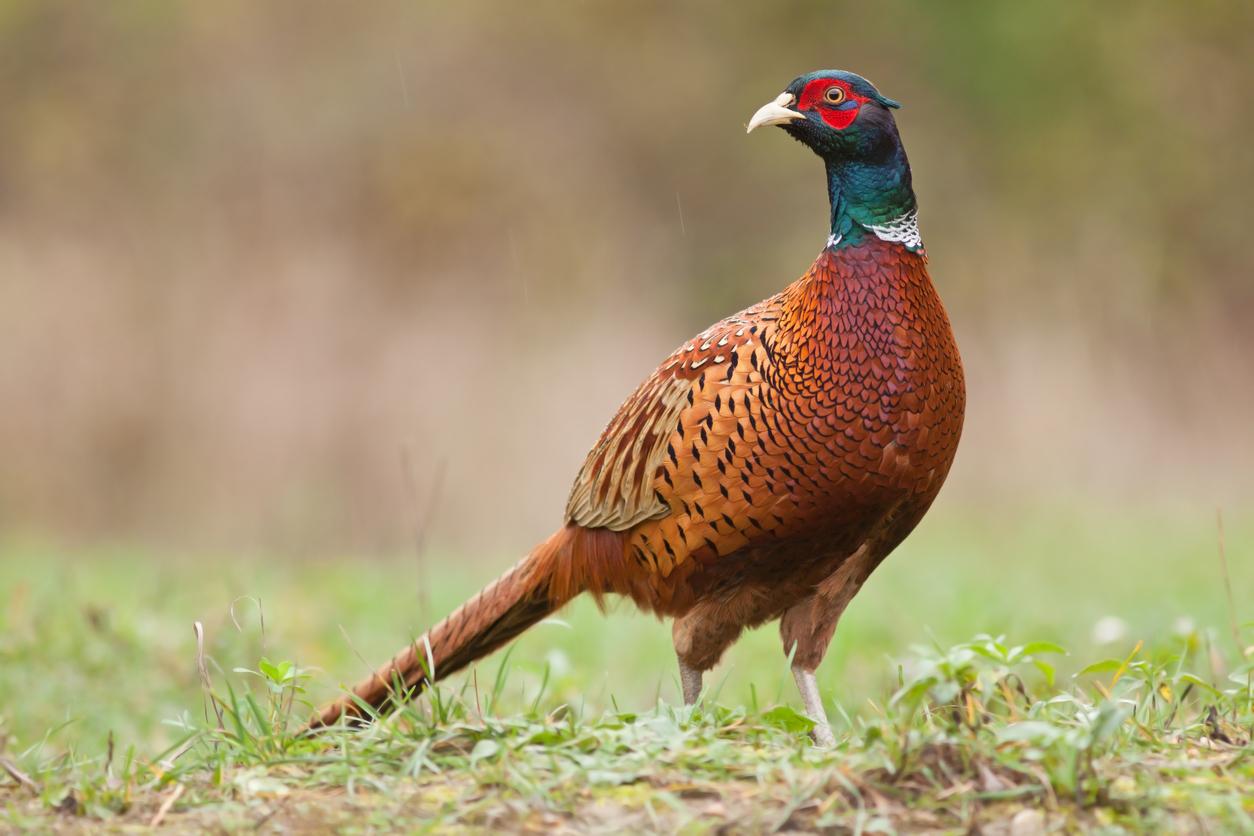Differences between Male and Female Pheasants


Common or ring-necked pheasants are known by the scientific name Phasianus colchicus. They are common game birds, but they are also reared for poultry and can make good pets if you have a wide outdoors space and a place to shelter them.
A moot point while raising pheasants is how to distinguish between the male and the female of the species. The different subspecies of the common pheasant have interbred, and the adult plumage therefore varies, complicating their sexing. However, they still show noticeable sexual dimorphism.
Do you want to learn the differences between male and female pheasants? Stay with us at AnimalWised and read on!
Main differences between male and female pheasants
Adult common male pheasants are colorful and quite beautiful, with a distinctive and unmistakable appearance. Their bodies are chestnut colored, and they have a blue-green face with red wattles and bright shades around their eyes. A white collar often separates the head from the body, creating a striking contrast.
Paler in appearance, female pheasants are well camouflaged because they are streaked and spotted. This natural camouflage is essential for their survival, especially during nesting season, as it helps them blend into their surroundings and avoid predators. Male pheasants, on the other hand, seem to be built to stand out. In the picture below, you can see a male Himalayan monal (Lophophorus impejanus), which, as in the case of the common pheasant, is much brighter than its female counterpart.

Size differences between male and female pheasants
Another basic difference in the sexes of pheasants is size. Female pheasants measure only 50 to 65 cm (20 to 25.6 in), of which 20 cm (8 in) is their long tail. Their average body weight is of less than 1 kg (2 lb).
Male pheasants, on the other hand, are quite bigger. They measure 60 to 90 cm (24 to 35 in) long, of which more than half is the 35 to 50 cm (14 to 20 in) tail. As an average, they weigh about 1.2 kg (2.5 lb).
The size difference not only helps in identifying them but also plays a role in their mating displays, where larger size and longer tails are often advantageous. In the picture below, you can see two male pheasants - notice how their tails are longer than their bodies.

Color differences between male and female pheasants
There are many colorful forms to the male pheasant; depending on the species and subspecies, they can range from black to white. Adult male common pheasants often have fiery red, chestnut brown, or gold plumage with purplish to green marks. The male common pheasant has a small crest and a red wattle along with a distinctive green head and a long, thin black tail. Not all subspecies show a white neck ring, but some do.
Female pheasants, regardless of their species, are always less gaudy and more subdued. Their plumage is often in different shades of brown, with pale scaling or mottling on the upper parts. Their underparts are usually lighter, in a buff or cinnamon shade. The differences between species and subspecies are much less clear in female pheasants, making them more challenging to distinguish at times.
In the picture below, you can see a male satyr tragopan or crimson horned pheasant, showcasing its striking coloration that serves as a visual spectacle during courtship rituals.

What do young pheasants look like?
Juvenile pheasants look like small females no matter their sex. They only begin to show sexual dimorphism at between 2 and 3 months old, when males start to grow bright and colorful feathers upon reaching adulthood on their breast, head, and back.
This offers both vulnerable groups, like juveniles and mothers caring for chicks, a distinct evolutionary advantage in shielding and blending into the background to hide from predators. This camouflage is crucial for their survival until they are mature enough to fend for themselves.
In the picture below, you can see an immature male common pheasant, which is beginning to develop the vibrant plumage characteristic of adult males.

Differences between male and female pheasants of different species
Coloring is not always the easy way to sex pheasants. Individuals of the same subspecies can show flavistic (fawn) or melanistic (black) mutations, as well as other color variations.
In the case of the green pheasant, distinguishing between the male and the female is much harder. Green pheasant males have shorter tails as opposed to common pheasants, while green pheasant hens are darker, with dots on the belly and breast. They show similar outer coloring, which makes sexing them tougher.
Golden pheasants are much easier. By the time chicks are around 3 months old, males have colored markings on the back and base of the tail, a noticeable golden crest, and their eyes change color to a very pale yellow. In the picture below, you can see a female golden pheasant.
The rooster of the Lady Amherst's pheasant has stronger markings and contrasting black and white as compared to the hen, who has dull brown feathers with creamy markings on the breast.
Himalayan monal hens also have distinctively delicate markings compared to the male, who at 10 weeks old has developed black markings on its chest and the back of the neck as well as shimmering metallic multicolor feathers. The vibrant feathers of the male are not just for show; they play a critical role in courtship displays.
When it comes to silver pheasants, males are black and white with beautiful patterns, while females are brown; however, they both have red faces and legs. The striking contrast in coloration is a classic example of sexual dimorphism.
In general, eared pheasant males have more noticeable spurs than the narrow spurs of the hens, and their face wattles are larger. These features often aid in establishing dominance and attracting mates during the breeding season.

Size, tail length, weight, plumage, and color are the chief criteria you can use to tell the hens apart from the roosters when you're looking for the differences between male and female pheasants. Other traits that show sexual dimorphism, such as neck rings, wattles, and spurs, depend on the species. These differences are not just physical; they play a significant role in the social structure and mating systems of pheasants.
Stay with us to learn the differences between pheasants, quails, and chickens!
If you want to read similar articles to Differences between Male and Female Pheasants, we recommend you visit our Basic care category.










